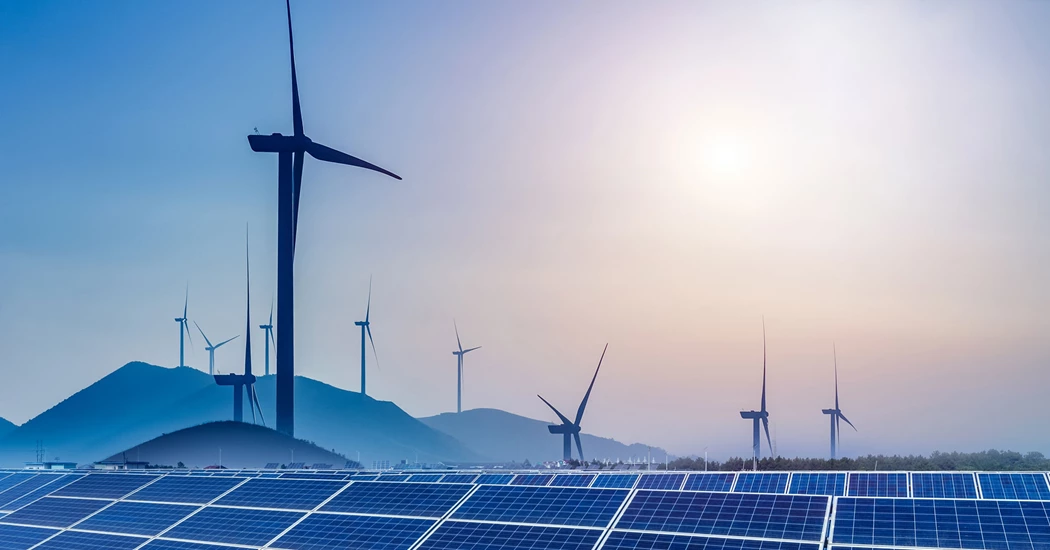Unlocking Africa's renewable energy potential: overcoming high costs and political risks
The whole of Africa has less than two-thirds the solar and wind capacity of the Netherlands, a small and not very sunny country. Meanwhile, international oil companies are struggling to craft successful low-carbon businesses. Maybe there is an opportunity here.
600 million Africans, mostly in sub-Saharan Africa, lack access to electricity. Sub-Saharan Africans use 180 kilowatt-hours of electricity per person per year – enough to run a standard incandescent bulb for about five hours daily. The average Indian uses seven times more; the average American, 70 times.
Sustainable progress in the economy and human development won’t be achieved without more – much more - electricity. Modern healthcare, offices, manufacturing, not to mention data centres and more advanced technologies, need sizeable, reliable, high-quality power.
This is not for lack of potential: the International Energy Agency (IEA) says that Africa has 60 percent of the world’s best solar resources, opportunity for more than 90 times the current global installed wind capacity, and the world’s highest untapped hydropower capacity along great rivers such as the Congo. East Africa’s Great Rift Valley is one of the most suitable areas globally for geothermal power, while Africa also has great resources of bioenergy.
Yet major Western renewables players largely ignore the continent, with the exception of more-developed north Africa and South Africa. Instead, Gulf state entities and private companies, such as Masdar and AMEA Power from the UAE and ACWA Power from Saudi Arabia, have made up part of the gap, ultimately redeploying petroleum-derived funds.
A new paper from Jim Krane for the Anwar Gargash Diplomatic Institute in the UAE lays out some of the key reasons why Africa lags so badly on renewable investments. Solar and wind have become cheaper than electricity from oil, gas and even coal in many parts of the world, as their cost falls while performance improves, and storage systems such as batteries also become more effective.
But this is not the case in Africa. The cost of capital is very high, because of real and perceived business risks. Renewable energy, with usually low operating costs but high up-front capital costs, suffers badly when that capital is expensive. The IEA indicates that the cost of capital for large renewable projects in Africa is two to three times higher than in developed markets and China.
Key risks include payment: the state utility often sells power at rates below-cost, or cannot collect fully from customers, and may not be adequately supported by its parent government. This is a chicken-and-egg problem: when electricity is expensive, consumers find it harder to meet their bills, demand does not grow, and the industry suffers from lack of scale.
As renewables continue to improve, power purchase agreements signed at higher rates for older projects start to appear expensive, and become prime targets for renegotiation. Most of the cost of the renewable equipment is denominated in dollars, but the revenue is received in local currency, which may depreciate or be non-convertible.
Government policy is unstable. In times of political or economic turmoil, it becomes tempting to default on commitments to foreign investors. This is especially so when the project was approved by a previous administration, which may then be accused of corruption. Expropriating a wind or solar farm, which requires little ongoing investment, may even be an easier option than seizing an oil or gas field.
Meanwhile, international oil companies have the complementary problem to Africa’s lack of renewables. After promising to transition their businesses towards lower-carbon energy, they have found it hard to generate a competitive advantage in Europe or North America.
Offshore wind, with similar operating conditions to offshore oil and gas installations, seems like a promising area. But BP and Equinor wrote down $840 million of investments in US offshore wind projects last year. Biofuels should be another complementary sector to petroleum, but Shell in July announced an impairment of $600 million to $1 billion on a paused biofuels plant in Rotterdam.
The generally lower returns in “utility” businesses are one deterrent. Another is the competition from dedicated renewable players, such as Denmark’s offshore wind champion Ørsted or Italy’s Enel. Specialists benefit from focus, but even they have not had an easy ride through recent problems of cost inflation and supply chain hurdles. Both Shell and BP have since rethought their strategies, tilting them back more to oil and gas.
But these international oil companies are, from necessity and long experience, adept at dealing with politically and commercially risky jurisdictions. 73 percent of foreign direct investment in Africa is into the extractive industries – petroleum and mining. That is good for government revenues, though it has not been enough to develop self-sustaining and internationally competitive industries in other sectors.
Of course, oil companies have begun developing renewables in some countries where they have a long presence, or as complements to their petroleum operations. TotalEnergies signed last July to develop a solar farm as part of a larger integrated energy project in Iraq, Shell has built a solar plant in Oman, and Italy’s ENI is working jointly on solar projects in Algeria. They have also got involved in early-stage, renewable-based hydrogen projects., with BP and Shell both having stakes in ventures in Oman.
But these are still relatively well-off and developed jurisdictions. To make more impact, the international oil companies would need to advance renewables in large African states such as Nigeria, the Democratic Republic of Congo, Ethiopia, Tanzania, Angola and Mozambique. Most, though not all, of these, are current or aspiring hydrocarbon producers.
The commercial and political risks are real and significant. But international oil companies may be best-placed to understand and manage them. Tactics include the use of political risk insurance, and legal protections such as stabilisation clauses and international arbitration. As with the TotalEnergies Iraq deal, they can also bundle renewables with hydrocarbon investments that provide a guarantee of repayment.
They will be compensated for taking more risk with higher returns – helping such opportunities to compete for capital in their portfolio with petroleum projects. And they will be supporting human, low-carbon development, doing something to offset the regular criticism of their activities in lower-income countries.
- Robin M. Mills is CEO of Qamar Energy, and author of The Myth of the Oil Crisis
Energy Connects includes information by a variety of sources, such as contributing experts, external journalists and comments from attendees of our events, which may contain personal opinion of others. All opinions expressed are solely the views of the author(s) and do not necessarily reflect the opinions of Energy Connects, dmg events, its parent company DMGT or any affiliates of the same.






